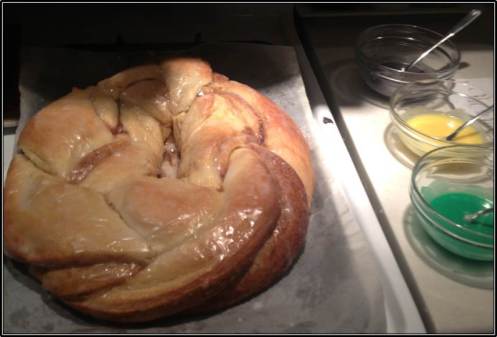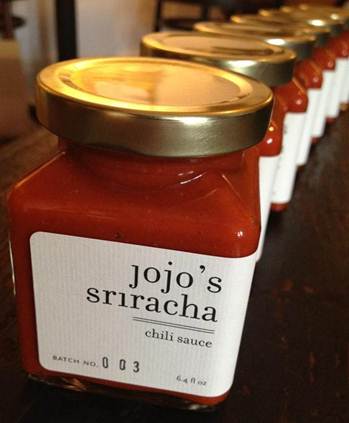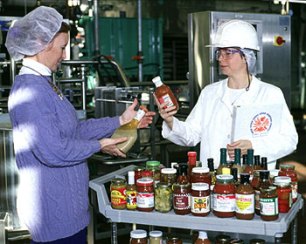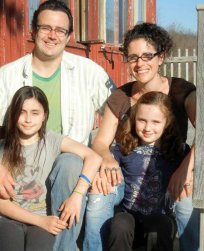 Anyone from New Orleans will tell you that the food most synonymous with Mardi Gras is the King Cake. This blog post will tell you briefly about the cake; but, more importantly, I’m going to walk you through the ingredients, procedure and show you shot by shot how to make this delicious creation. Click on the link below for the full text and photos associated with the blog.
Anyone from New Orleans will tell you that the food most synonymous with Mardi Gras is the King Cake. This blog post will tell you briefly about the cake; but, more importantly, I’m going to walk you through the ingredients, procedure and show you shot by shot how to make this delicious creation. Click on the link below for the full text and photos associated with the blog.
Regardless of the type of business you work with and/or for, you must take steps to plan ahead to preserve your assets. Significant Business Disturbances (“SBDs”), such as Hurricane Sandy in New York, put business assets at risk. Establishing Business Continuity Plans (“BCPs”) arms organizations with contingency plans to preserve their assets, communicate with colleagues and business partners and ultimately resume operations as soon as possible.
Since 2004, financial firms have been required by regulation to establish, maintain and test BCPs. And, I’ve been intimately involved in composing and testing these plans. Having most recently graduated from culinary school and seeking to transfer my skill set over to this industry, I started to noodle about how this industry, depending on the business would establish a workable plan.
Core Considerations
Before putting pen to paper and writing a plan, the following must be considered:
- How large is the organization?
- What type of business is it? . . .a restaurant, a store, consulting, catering, an office complex, or a mixture of several types
- Where is the business located? . . .One city, several locations in one city, several cities, states and international locations, etc.
- What is the management structure of the organization?
- What types of communication are in place?
- What types of technology does the organization utilize?
- Are there schedules specific to the business that must be treated with sensitivity (i.e., time and temperature sensitivity related to certain types of food products)?
- What are your assets and how valuable is each?
Once these core details are clear, it becomes apparent where basic improvements are needed; and, management can begin to plan for protecting the organization’s assets.
Sketch out a Plan
How can basic improvements be made and plans put in place to protect assets? Below are several considerations that can help an organization develop a workable plan.
- Engage people within your organization to be involved in the process. Sharing ideas is the best way to discover innovative solutions.
- Can existing relationships with current and former employees, business partners (e.g., local farms upstate with livestock and produce) and community leaders be leveraged in planning and in the case of an emergency?
- Investing in cloud or online storage in addition to the data stored in local servers (e.g., If there is a flood or power goes out, local servers cannot be accessed and in some cases may be destroyed).
- Create agreements with locations outside of the immediate area in which a business operates as a means to have alternate locations to which valuable assets may be transported and stored.
- Create agreements with transportation companies to garner vehicles appropriate to the organization (e.g., If there is high value food that must be transported within certain time and temperature restrictions, perhaps the most appropriate vehicle is a refrigerated truck; If there are more locations than one, perhaps it would be more beneficial for the organization to centralize evacuation efforts).
- Are there easily accessible means to communicate with all staff (i.e., 800 numbers with updates, call trees, email, etc.).
- Is personal contact information obtained for all individuals within the organization (i.e., cell phones, personal email addresses, physical home address, emergency contact, etc.). Where is this information stored? How often is the information tested? How often is the information updated by staff?
- What sort of emergency items should be maintained on site? . . .Head lights, flashlights, garbage bags, batteries, walkie talkies, etc.; Are generators appropriate? Is gas for generators able to be obtained and or allowed to be stored on site?
Final Thoughts
Once you have a plan in place, circulate it for comment within the organization and with business partners whose opinion you value. Only by sharing information and best practices can we work together as a community to address and survive SBDs.
Test your plan regularly (i.e., at least annually but ideally quarterly). Update contact information on your staff and business partners as often as changes are made (i.e., monthly). Make the plan available to all managers and senior staff within the organization to share responsiveness and ownership in the plan.
Who would even think it possible to cut a potato into a chain? You may ask whether  it is even worth the trouble. “If you put a fried potato chain on a customer’s plate, they will never forget it,” André Soltner (February 2012).
it is even worth the trouble. “If you put a fried potato chain on a customer’s plate, they will never forget it,” André Soltner (February 2012).
Let me attest to the fact that this is totally doable. You too will be able to cut potato chains after reading this blog post and trying it yourself.
Tickle Sauce Menu Project 2012
The purpose of this project was to put into words the tangible New Orleans family meal, as it had been experienced through the mind’s eye of my grand mere. Try these recipes and make them your own. When food is made with love, it tastes better.
Life is serendipitous.
A year ago, I/Tickle Sauce participated in Brooklyn Botanic Garden’s Home Grown event, which catered to local Brooklyn foodies, local artisans and small business owners to get them exposure at a minimal cost, while providing a reason for people to experience all that the Garden has to offer.
It rained cats and dogs all day, which kept most people at bay, except for an aspiring sriracha maker from Park Slope, Brooklyn. Jolene Collins, or “Jojo”, as she prefers to be called, and I talked through the afternoon about the process of getting a product to market in New York State. We started by talking about Cornell’s Food Entrepreneur program, which led to us talking about NYSSFPA and other resources that were available.
 Jojo’s story with sriracha began back in February 2010 in Denver, CO. While training to become a yoga instructor, she started to cut refined sugar out of her diet. This move away from refined sugar would transform the way Jojo looked at food and lead to the creation of a very special sauce.
Jojo’s story with sriracha began back in February 2010 in Denver, CO. While training to become a yoga instructor, she started to cut refined sugar out of her diet. This move away from refined sugar would transform the way Jojo looked at food and lead to the creation of a very special sauce.
Cutting out refined sugar from a diet essentially means you’re going to make all of your food at home, since most foods in the commercial market contain it. Her favorite condiment was sriracha sauce, so Jojo set out to create her own at home.
Fast forward through several test batches to a batch of homemade sriracha that was shared with friends who would say, “This is delicious. You should bottle it.” Like most people experimenting with creating a sauce, bottling and selling it is a far off aspiration. Jojo was no different.
She moved to NYC in May of 2010 and almost immediately started volunteering time at Queens County Farm. It was through making meaningful connections with the farmers there, discussions about her aspiration to create sriracha and their interest in testing out their peppers that she was able to start experimenting with batches again. They loved what she produced and helped her connect with Eckerton Hill Farm and Oak Grove Plantation to have access to more peppers of different varieties.
With the warm support of these farmers and the exponential variety of peppers, the sauce flavor was developing rapidly. This was her “aha” moment, when Jojo realized that connecting with local farmers, utilizing locally sourced ingredients and producing a flavorful sauce to share with the community was what she wanted to do.
The next step was doing ground work and puzzling out how to get the sauce from her kitchen to a store shelf. Sriracha is a different type of sauce that requires more care than most:
- Special equipment not available in all commercial kitchens;
- Storage space to allow time for the batch to ferment; and,
- A kitchen that allows products with capsaicin (i.e., cooking with peppers permeates the entire kitchen and often some kitchens don’t allow these types of products to be produced so as not to contaminate equipment or otherwise permeate the overall space).
If you seek to produce your own sauce, consider 3 hurdles: education and certification (i.e., Better Processing Control School certification), finding the right kitchen space and making sure the equipment available for use fits your product. Each state’s requirement is different. In New York State, Cornell’s Food Entrepreneur Materials and their office as a “phone call away” resource, have been extremely helpful in making progress.
Don’t be fooled into thinking that Jojo’s only product will be sriracha or even culinary-based. Her talents are multi-dimensional, and she has been developing face and body scrubs, oils and a whole separate line of holistic products for a better well-being.
Jojo can be reached at loveofjojo@gmail.com. Like her on facebook: https://www.facebook.com/loveofjojo.
Useful resources are key for turning ideas into reality in the food service industry. In my last blog post I wrote about using the great resources at Cornell to create a scheduled process. To read more on the Cornell Entrepreneur materials, click here: https://ticklesauce.wordpress.com/2012/05/25/food-entrepreneurs-you-can-do-it/. My next breakthrough was finding the New York Small Scale Food Processors Association (SSFPA), http://www.nyssfpa.com/.
The organization includes local farmers as well as small businesses with local products. It’s the perfect organization for people with a small business, who are trying to get their products up and running. SSFPA has been extremely helpful to connect us with other like-minded individuals with small businesses like ours and with local farms from whom we buy produce to make our sauce. It’s run by people like us for us.It’s incredibly satisfying to reach out to people wanting to share information, act as mentors or help us puzzle through a problem to find a viable solution. Annual membership dues are inexpensive at $30 per year, and you can benefit right away by joining. Read on to find out exactly how.
Let me take you back to the mistake I made before finding SSFPA. I thought I needed to get a nutrition label in order to apply for insurance and in order to be prepared for my meeting with a co-packer or other production facility. I wanted to get the product up and running; and, the nutrition label was one of the pieces I needed in place for that to happen.
What I didn’t realize was that the nutritional information on your product is one of the last things you will need. In the final steps leading up to production, your recipe may change slightly, which then results in changes to a nutrition label. Liz Beals, a SSFPA member helped me understand that. She also let me know that the organization has a resource that supplies members with nutrition labels for as low as $50 per product. I found this out after I had already spent $150+ getting a nutrition label. Needless to say, I couldn’t use the original nutrition label.
If you need nutrition labels for your product, the SSFPA is the most economical resource around. And, membership in the organization comes with so many benefits.
Send an email or tweet me if you have other questions about turning your food product ideas into reality.
If you think you have a winning product that all of your friends love, can’t get enough of and bring you their empty containers asking for refills, . . . You too can get your product from your home kitchen to a store shelf.
 I started making a hot sauce in 2003. Friends would bring me their empty containers asking when I was making more to refill their stock. I made a sauce that I loved and couldn’t otherwise find in local stores. In 2010, a friend said that he was opening a store and wanted it on the shelf when he opened. Essentially, I was told to get a move on it, make it happen, and step on it!
I started making a hot sauce in 2003. Friends would bring me their empty containers asking when I was making more to refill their stock. I made a sauce that I loved and couldn’t otherwise find in local stores. In 2010, a friend said that he was opening a store and wanted it on the shelf when he opened. Essentially, I was told to get a move on it, make it happen, and step on it!
I did just that.
When you start a company, there are many factors to consider (i.e., focus of product, business plan, potential client base, test marketing, structuring the finances / planning how to fund the venture, production options, labels, insurance, etc.). We will get to many of those components in future posts to this blog; however, we need to crawl before we walk and walk before we run. Where do you start?
Start by educating yourself on the state requirements for your product. Start by contacting Cornell. Cornell is known for their strong restaurant program. What people don’t know is that they have a “test kitchen” of sorts that is structured to help small businesses get their products up and running. The entity at Cornell is called the “Northeast Center for Food Entrepreneurship at the New York State Food Venture Center” (“NECFE”). They provide the basic information and are there to answer questions along the way.
When I first called NECFE, they answered as if they already knew me. I guess they get these types of calls from people a lot. They sent me a disc in the mail with a 500-page tomb. It was a daunting read, until I realized that the document was a roadmap for many products. It was a one-stop repository for many people like me, and not all of it applied to my product. I quickly stripped out only the sections that applied to me and set about putting my outline together of things I had to know.
The most important thing to get together in my opinion is your “Scheduled Process”. This is a fancy way of saying, “List your ingredients and how you compile them.”
What I pulled out from the materials were essentially that I needed to:
- Put together a “Scheduled Process”;
- Make a test batch (you can do this at home and do NOT need to rent commercial kitchen space for this test batch);
- Put the test batch in two separate glass containers of at least 4 ounces each; and,
- Mail it off to them safely (be sure to include 2 copies of the scheduled process and to wrap the two containers to prevent them from breaking).
After sending everything off, it’s a 2-3 week wait for the news of whether your product is safe for sale in the state. In my case, I got a letter asking me to send in a check for a certain amount, which covered the test Cornell performed on the bottles. And, my approved scheduled process came in the mail shortly after they received payment.
Note: I used natural preservatives of vinegar and lemon in my product. Cornell was sure to tell me where to keep my pH levels in order to retain this safety level, etc. They literally guide your hands through the process of what you need to do.
In a nutshell, this Cornell test allows budding entrepreneurs to get a piece of paper that gives them the go ahead to get their product to a production facility and let it grow. Several other components are needed to actually make that happen, but nothing can happen until you get the recipe reviewed for state regulation. Cornell does this for less than $100.
One mistake we made that you should not is getting a nutrition label for your product yet. You will not need that at this starting phase and will not need it before you talk to production facilities or for insurance. Your recipe may change slightly when you scale it for certain production sizes, and that is one of the last things you’ll need to acquire. We have a very inexpensive option we found out about too, so look for our upcoming blog on the New York Small Scale Food Processors’ Association.
We’ll have more posts like this that talk about the other steps associated with the process (or at least the process that we followed) to get a product up. Stay tuned. And, don’t hesitate to reach out with questions or topics you’d like to see. We will do our best to research and share what we discover.
Most people can relate to looking back on their lives and careers with realization that their paths have been serendipitous; meaning, they have been built upon the culmination of a myriad of different experiences. . . small epiphanies, occasional transitions in to new directions and ultimately the resulting successes that lead us to where we have come. Most of us are able to build a life of which we’re proud; and, in rare instances, some of us are able to create and foster something so uniquely special that it helps to transform and positively influence the lives around us. One such person is Chef David Shea.
to new directions and ultimately the resulting successes that lead us to where we have come. Most of us are able to build a life of which we’re proud; and, in rare instances, some of us are able to create and foster something so uniquely special that it helps to transform and positively influence the lives around us. One such person is Chef David Shea.
Chef Dave grew up in Greenwich Village, NYC in the 70’s and 80’s, a time of great change for both the city and our country. After returning from military service in the early 90’s, David settled into a life that most of us do in our early 20’s, a steady job and the company of friends. Dave held a steady job by day as a locksmith; and, through a friend’s introduction, began cooking by night at a local restaurant. His only experience at the time was cooking out of necessity for himself and sometimes for friends in a relaxed, home atmosphere. What he realized was that he liked cooking, and he felt like he had an aptitude for it.
Over the next few years, Dave migrated to more rigorous kitchens (i.e., Bubby’s in Tribeca & Brighton Grill –now closed–on the Upper East Side of Manhattan), where he continued to develop skills as a line cook. Building up the confidence in the strength of his abilities, Dave worked up the nerve to write a letter to La Bernardin in 1995. He directly asked for a job with them to further develop into a successful chef. Fortunately, he was told at the time that he wasn’t ready for it; and, his life began to change direction.
Dave knew that the rejection was more of a “not right now” than a “no”, and he began to strategize. With the opportunity to help open and build a restaurant in the village, Lombardi’s Pizza, Dave took this chance to deepen his knowledge of the business, while continuing to build his competence in the kitchen. It was during this pivotal time that Dave began to consider pursuing a formal educational that would propel his career forward.
In early 1996, Dave’s grandmother approached him with the financial backing to pay for his first semester of cooking school at the Culinary Institute of America (CIA) in Hyde Park. Dave still recalls the day that his grandmother and uncle drove him to school. As they dropped him off, he got a, “Don’t f@#% this up” retort. There was no pressure at all to make this work.
The decision to attend the CIA changed his life forever. CIA is where Dave met his wife Laura, where he gained the technical skills to become a fine dining chef and where he was first exposed to internships that supported local, sustainable farmers.
The program at CIA lasted two years, during which time Dave externed at the Hudson River Club, a restaurant that supported locally sustainable food. He and Laura also found their way to volunteer time on weekends at the Old Chatham Sheepherding Company, which at the time was run by Chef Melissa Kelly. Back in 1996-1997, the local, sustainable farming movement of farm-to-table was in its infancy. It was very difficult at the time for restaurants to have relationships with local farmers to source their foods. While in Europe local farms grew vegetables and livestock for use by specific restaurants, the American restaurant system catered to mass market rather than connecting local farms with restaurants in their regional domain (Delucia, 2008). Old Chatham was one of the first farm-to-table establishments, whose garden was literally less than 50 feet from the restaurant’s kitchen. David and Laura spent their weekends becoming educated on the value of creating menus around fresh produce made by local farms. This educational experience would prove invaluable to their careers.
Upon graduation from CIA at the end of 1997, David and Laura moved to Chicago, where Laura was raised. Laura migrated to the front of the house, where she built a strong skillset to lead and manage the business, train staff, do it all, etc. David initially took a position as a line cook at Crofton on Wells. He transitioned over to Spruce where he worked his way up from line cook to tournant to sous chef to ultimately executive chef. In addition, David went on to open restaurant Twelve 12 as executive chef (Mice at Play, 2011).
In 2003 Dave and Laura left Chicago  and returned to New York, settling in Brooklyn. They brought with them the very tangible dream of opening their own restaurant. Over the years since graduating from CIA, Dave and Laura had meticulously written down ideas they had, if and when they were able to open a restaurant of their own. Their ideas were so well developed that their business plan was in place by the end of 2003. Angel funds from an old friend allowed for the actualization of their decade’s old dream, to establish and run their own restaurant. Applewood was founded in 2004 in Park Slope Brooklyn.
and returned to New York, settling in Brooklyn. They brought with them the very tangible dream of opening their own restaurant. Over the years since graduating from CIA, Dave and Laura had meticulously written down ideas they had, if and when they were able to open a restaurant of their own. Their ideas were so well developed that their business plan was in place by the end of 2003. Angel funds from an old friend allowed for the actualization of their decade’s old dream, to establish and run their own restaurant. Applewood was founded in 2004 in Park Slope Brooklyn.
When they first opened, it was difficult to establish relationships with local farms to build a network of sustainable food sources for the restaurant. Dave knew that he wanted to build a menu using only produce that was in season and from the region; and, he knew it was within reach. While establishing the first few relationships with local farms was arduous, they began to slowly flow in more steadily. Now, Applewood offers a specialized dinner once every six weeks called, “Meet the Farmer.” Local farmers that supply Applewood are each invited to share in a dinner at the restaurant where their specialized product is the focus of the dinner. Each course is built upon something they grow or raise, and both the farmer and the Chef take a moment in the evening to talk about the value of the products that are supplied.
The positive impact of supporting local farmers and producing healthy fare is only part of the impact that Dave has on the community. The kitchen and overall Applewood staff have been developed to foster an environment of cooperation and mutual respect. As the perfect team, Dave runs back of the house while Laura runs front of the house.
There are three stations in the kitchen (i.e., fish station, meat station & pastry). Everyone working in the kitchen rotates every two weeks to each of the stations in turn, regardless of their experience in the kitchen. The inexperienced cooks trail until they gain the competency to run the station. Ultimately, all become ambidextrous in the kitchen at Applewood, able to develop the skills needed to support all stations. They average 12 hour days and work 5 day weeks, and everyone contributes to the construction of the menu. For an industry often known for intimidation in the kitchen and endless work hours, Applewood is setting the bar high to create a more healthy and balanced work milieu in the food services industry.
While David and Laura have built a thriving business, they strive to continue to evolve. Most recently, they purchased a farm in upstate New York, where they have begun to plant crops for harvest in the spring and summer. They are working to bring the next phase of their business plan to fruition, creating a farm-to-table concept specific to their restaurant’s needs. Of course they have always connected with local farmers to supply their restaurant, this makes the connection for them much more direct. To help them in their efforts to grow the farm, reach out to them here:
http://www.indiegogo.com/Meet-the-Farmers
As business leaders, Dave and Laura are continuing to build on a long tenure of successes. In doing so, they are realizing their business and personal aspirations in a way that fosters a positive impact on the community in which they live. We in Park Slope are thankful for the way they have enhanced our neighborhood.
We intend to post topics within the culinary industry that stand out to us. We have an interest in sharing ideas on the business side of the industry in addition to some of the staples often seen in food blogs. Sometimes we’ll focus on a novel idea someone we admire is working on, other times it’ll be an approach to a business (e.g., getting a food business off the ground) and still the staples of most food blogs will be included from time to time such as a blog about a chef, a mixologist, a recipe or restaurant.
If there is something you’d like to see, reach out to us and we’ll do our best nto research and provide answers.
Regards,
Heidi (and Sauce Team)

